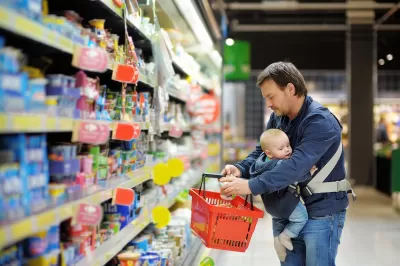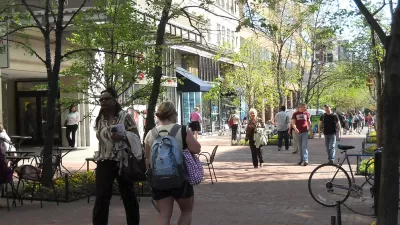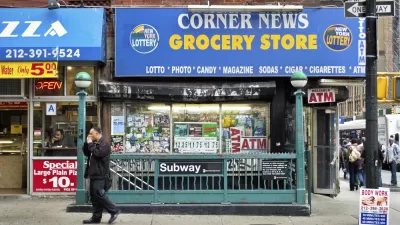Government support has helped open stores in underserved communities, but cost and scale make it difficult for small businesses to survive long-term.

In 2018, Illinois launched a $13.5 million initiative aimed at bringing grocery store options to areas known as ‘food deserts’ — “defined by the U.S. Department of Agriculture as any low-income urban neighborhoods without a grocery store within a mile, and any rural communities without one within 10 miles” — where residents have a hard time accessing healthy and affordable foods.
But of the six stores that opened that year, four have closed, highlighting the problem of longevity for such projects that receive initial fanfare but little ongoing support.
As Molly Parker explains, “Capitol News Illinois and ProPublica examined 24 stores across 18 states, each of them either newly established, preparing to open or less than five years old when they received funding through the federal USDA Healthy Food Financing Initiative in 2020 and 2021. As of June, five of these stores had already ceased operations; another six have yet to open, citing a variety of challenges including difficulties finding a suitable location and limited access to capital.”
Ultimately, the investigation found, “For all the benefits the opening of a store can bring to a community, if it can’t compete on pricing, it will struggle to survive.” Although food deserts are defined by distance, other factors — the ability to buy in bulk, broader options — can still prompt people to travel farther for better deals. Meanwhile, some suppliers won’t work with small, independent stores.
To support the growth and longevity of local stores, Illinois launched a new program that will focus on supporting startups and small, independent stores. “And for the first time, government-owned stores in Illinois are eligible to apply for state aid. Chicago is the first major city in the nation to consider this option, though underwriting losses with taxpayer funds is controversial.”
FULL STORY: The Government Spends Millions to Open Grocery Stores in Food Deserts. The Real Test Is Their Survival.

Americans May Be Stuck — But Why?
Americans are moving a lot less than they once did, and that is a problem. While Yoni Applebaum, in his highly-publicized article Stuck, gets the reasons badly wrong, it's still important to ask: why are we moving so much less than before?

Using Old Oil and Gas Wells for Green Energy Storage
Penn State researchers have found that repurposing abandoned oil and gas wells for geothermal-assisted compressed-air energy storage can boost efficiency, reduce environmental risks, and support clean energy and job transitions.

Placekeeping: Setting a New Precedent for City Planners
How a preservation-based approach to redevelopment and urban design can prevent displacement and honor legacy communities.

San Francisco’s Muni Ridership Grew in 2024
The system saw its highest ridership since before the Covid-19 pandemic, but faces a severe budget shortage in the coming year.

Colorado Lawmakers Move to Protect BRT Funding
In the face of potential federal funding cuts, CDOT leaders reasserted their commitment to planned bus rapid transit projects.

Safe Streets Funding in Jeopardy
The Trump administration is specifically targeting bike infrastructure and other road safety projects in its funding cuts.
Urban Design for Planners 1: Software Tools
This six-course series explores essential urban design concepts using open source software and equips planners with the tools they need to participate fully in the urban design process.
Planning for Universal Design
Learn the tools for implementing Universal Design in planning regulations.
Heyer Gruel & Associates PA
City of Moreno Valley
Institute for Housing and Urban Development Studies (IHS)
City of Grandview
Harvard GSD Executive Education
Salt Lake City
NYU Wagner Graduate School of Public Service
City of Cambridge, Maryland





























